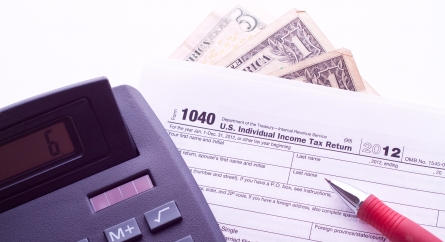Increase in 2025 Estate Exemption – IRS Issues 2025 Inflation Adjustments
The IRS recently issued the 2025 annual adjustments for numerous tax provisions, including changes to tax brackets and standard deductions. Popular adjustments include:
- Estates of decedents who die during 2025 will have a basic exclusion amount (i.e., an estate and gift tax exemption) of $13,990,000, which is an increase of $380,000 from the current exclusion amount of $13,610,000. Taxpayers who are using lifetime gifts as a way to decrease their taxable estates can use this increase to remove additional wealth from their gross taxable estates.
- The annual exclusion for gifts will increase to $19,000 for calendar year 2025, which is an increase of $1,000 from the current amount. This means that gifts to any person of $19,000 or less in 2025 will not require the filing of a gift tax return. For couples who elect to gift split on a gift tax return, this means they can gift a total of $38,000 per year per donee in 2025, without using any of their lifetime exclusion amount. Please note: There is no gift tax incurred unless and until you give more that your lifetime exclusion amount, which, for 2025, is $13,990,000.
- The standard deduction for married couples filing jointly for tax year 2025 will rise to $30,000, up $800 from 2024. For single taxpayers and married individuals filing separately, the standard deduction will rise to $15,000 for 2025, up $400 from the current amount, and for heads of households, the standard deduction will be $22,500 for tax year 2025, which is an increase of $600.
- Marginal Rates: For tax year 2025, the top tax rate remains 37% for individual single taxpayers with incomes greater than $626,350 ($751,600 for married couples filing jointly). The other rates are:
- 35% for incomes over $250,525 ($501,050 for married couples filing jointly)
- 32% for incomes over $197,300 ($394,600 for married couples filing jointly)
- 24% for incomes over $103,350 ($206,700 for married couples filing jointly)
- 22% for incomes over $48,475 ($96,950 for married couples filing jointly)
- 12% for incomes over $11,925 ($23,850 for married couples filing jointly)
- The lowest rate is 10% for incomes of single individuals with incomes of $11,925 or less ($23,850 for married couples filing jointly)
- For the taxable years beginning in 2025, the dollar limitation for employee salary reductions for contributions to health flexible spending arrangements (FSA) will increase to $3,300. For cafeteria plans that permit the carryover of unused amounts, the maximum carryover amount will be $660, which is an increase of $20 from the current amount.
This information and additional details can be found on the IRS website.
Categorized: Taxes
Tagged In: lifetime gifts, marginal tax rates, standard tax deductions, tax brackets






